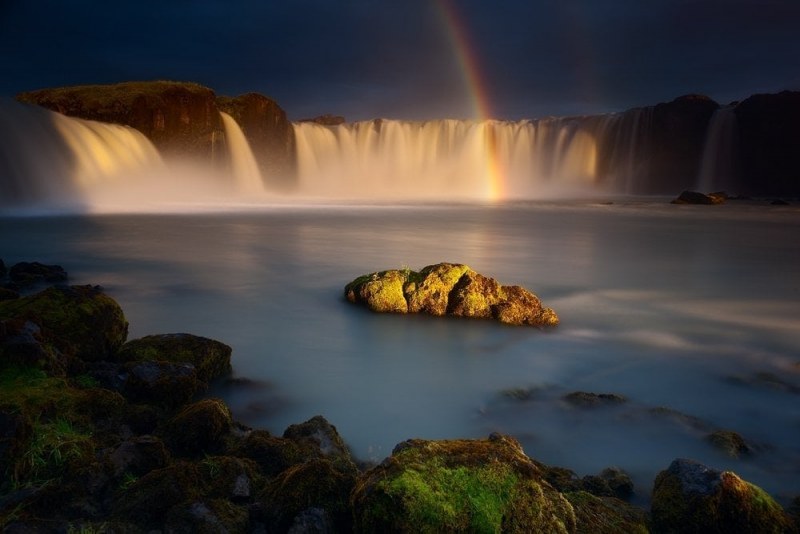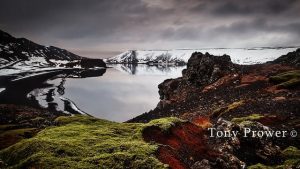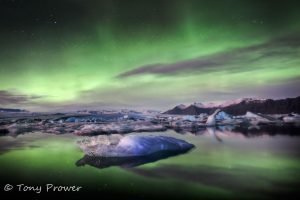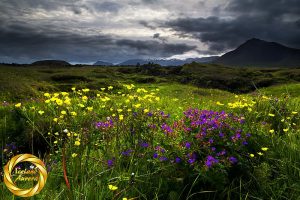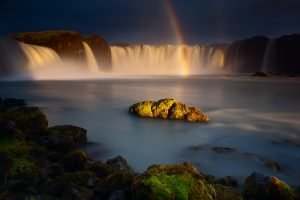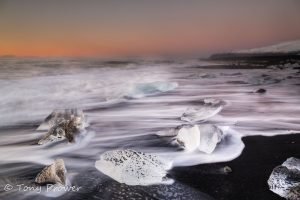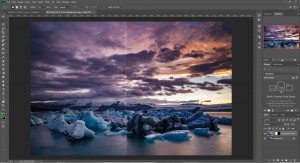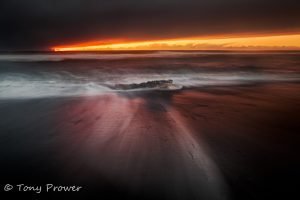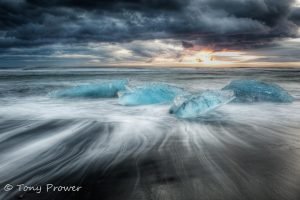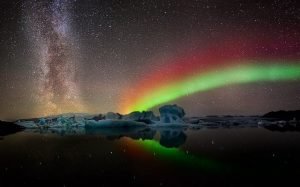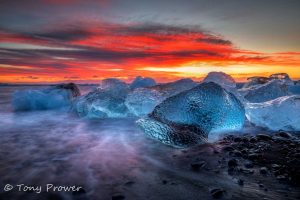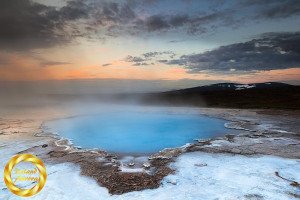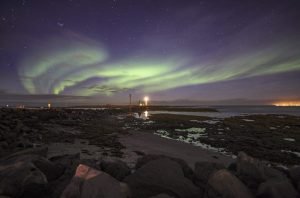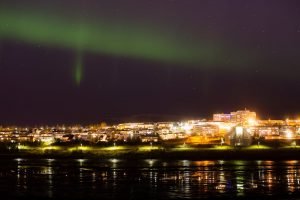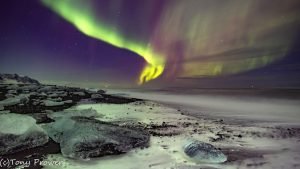Godafoss Waterfall
waterfall of the Gods
In the summer, I like to photograph Goðafoss waterfall in North Iceland at an ungodly hour!! The waterfall of the Gods is at the perfect angle for a summer sunrise. The dawn light shines right down the canyon, directly onto the waterfall. This event happens at around 03.00. I have attempted the same timings for several years. The results are a mixture of success and failure. Every time I have photograph Goðafoss waterfall for a mid-summer sunrise, I have been alone.
This photo of Goðafoss was taken on my first ever attempt. Talk about ‘Beginner’s Luck’! I actually got a bit lost and took a wrong turn towards Husavik. After a few more disconcerting turns, I managed to get back on track and arrived at Goðafoss waterfall just before three in the morning. Getting down to the river on the Western side of the falls is my favourite position for my 24mm prime. The distance from the falls allows me to just about fit this beautiful Icelandic waterfall in the frame. I always like to include the river before or after the falls to add depth and a storyline to my nature photos.
First Light
The North Iceland summer sunrise did not disappoint. At first light, the clouds above Goðafoss lit up with soft, warm pastel colours. There were pinks and oranges and the textures were attractive. As the sun rose a little more, the morning light shone right onto the falls. The rainbow appeared and my camera was already in position with a composition including a rocky foreground. All I had to do was press the shutter and use my Magic Cloth.
Two Seasons
The sunrise and sunset are in slightly different places each day in Iceland. These positions range from south in the winter to north in the summer months. As waterfalls normally face the coast, it makes sense to photograph the northern waterfalls in the Summer and the Summer falls in the Winter. Godafoss faces west, which is perfect for the soft light at 2 a.m. On the south coast of Iceland, Skogafoss and Svartifoss waterfalls work best in midwinter. For the same reasons, it is the same with Icelandic beaches. South coast beaches work beautifully in the winter, and northern beaches have better light in the summer.
The Magic Cloth Technique
The Magic Cloth Technique is a an interesting method to give more exposure to the shadows and less to the highlights. This is perfect for a regular sunset scene at a great location where the sky is just as interesting as the landscape. The The Magic Cloth Technique is a useful tool for your camera bag. All you need is a long exposure and a dark cloth, and you have a flexible tool.
Camera Equipment
Accessories
Be sure to choose the right equipment for Long exposure photography. A lens with a Some lenses are so wide, such as Nikon’s famous 14-24mm. The lens is great for long exposures at night, but dark filters for day time Long Exposure photography becomes complicated. Canon pro-DSLRs are perfect for Low light photography.
- Simple features and total manual mode
- Amazing live view able to fine focus stars!
- Most features can be accessed with external buttons .
- A little Red light on the back lets you know you are shooting. (useful at night)
ND Filter: (not if you are shooting at night!)
I prefer circular filters for wet atmospheres. The variable ND filters are very popular, but if you get moisture in between the glass, your filter is out of action for the rest of the day.
Sturdy Tripod:
If your tripod has a hook , suspend something from it to give extra stability. Many professionals carry a special tripod bag to put stones in to give a better stability which will support the tripod much better in windy conditions – perfect for long exposures.
Remote shutter:
Exposure times can sometimes be longer than the 30 sec your camera will allow. Having a Remote shutter (sometimes called “infra red Shutter release) will allow you to expose: as long as your battery allows.
